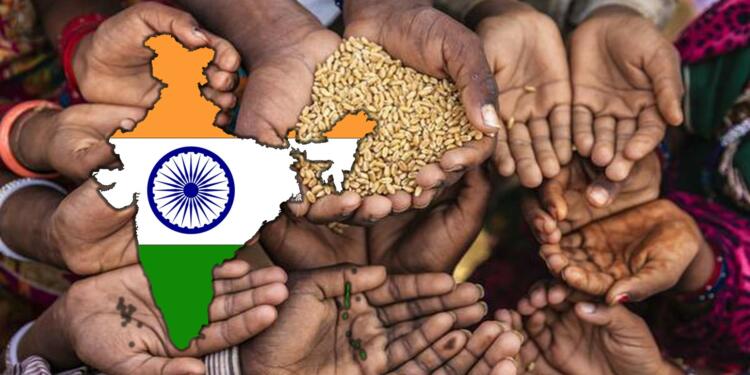Food security encompasses the trifecta of availability, accessibility and affordability of sustenance to fulfil the nutritional requirements of the population. The situation regarding food security in India is somewhat paradoxical. On the one hand, India boasts of being a prodigious producer of various agricultural commodities such as milk, pulses, jute, rice, wheat, fruits, and vegetables. However, this prosperity is juxtaposed by the unfortunate reality of food waste being a common occurrence at grandiose celebrations such as weddings.
From Prosperity to Waste: IAS tweets on food wastage
An image shared on the micro-blogging site Twitter by an IAS Officer, @AwanishSharan, serves as a poignant reminder of the extent of food waste at such gatherings. The officer drew attention to the issue of food wastage at these functions and exhorted individuals to be more judicious and considerate in their actions towards it.
A Tale of Two Realities: The State of Food Security in India
The picturesque brings to light the more prominent reality of India, which still faces major food security challenges. Around 194.6 million people in India suffer from chronic hunger and malnutrition, which is one of the highest levels in the world. In addition, nearly half of all children under the age of five in India are stunted due to chronic malnutrition. This not only affects their physical growth but also their cognitive and socio-economic development.
On the contrary, food waste is also a major concern in India. An estimated 50% of the food produced in India is wasted, which is equivalent to an estimated loss of US$14 billion per year. This waste is often due to inadequate storage facilities, poor transportation infrastructure, and a lack of food safety standards.
Furthermore, rising food prices are also affecting food security in India. Over the past decade, food prices in India have increased by an average of 6.6% per year, which has made food more expensive and less accessible for many people, especially those living in poverty.
To address these challenges, the Indian government has launched several programs and initiatives aimed at improving food security in the country. For example, the National Food Security Act, which was implemented in 2013, provides subsidized food grains to over 800 million people in India. The government has also established a number of food parks to help reduce food waste and promote food processing.
From Policy to Practice: Effectiveness of Government Schemes
More significantly, the United Nations’ food-assistance subsidiary, the World Food Programme, has commended India’s Pradhan Mantri Garib Kalyan Anna Yojana (PMGKAY), a relief initiative that dispenses gratuitous provisions to approximately 80 million recipients, as a “remarkable stride towards combating famine by any developing nation” during the ongoing pandemic. Through the program the government is striving hard to meet the ‘food security’ requirements of the underprivileged populace of the nation. As per the new scheme, the government has vowed to provide free food grains to 81.35 crore beneficiaries under National Food Security Act, for the year 2023. On the contrary, the affluent citizens are wasting food at their disposal.
Consequently, while India has made significant progress in terms of food production, the reality of food security in the country is still a mixed bag. Addressing the challenges of hunger, malnutrition, food waste, and rising food prices is crucial to ensure that every Indian has access to sufficient, safe, and nutritious food.
Support TFI:
Support us to strengthen the ‘Right’ ideology of cultural nationalism by purchasing the best quality garments from TFI-STORE.COM































